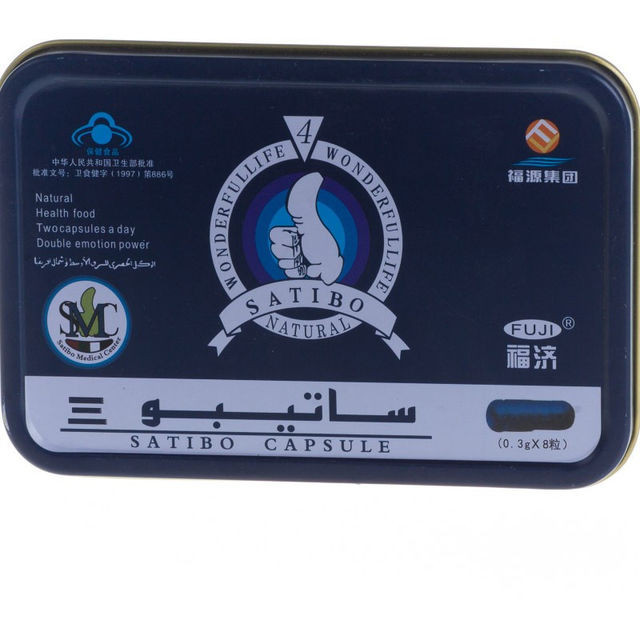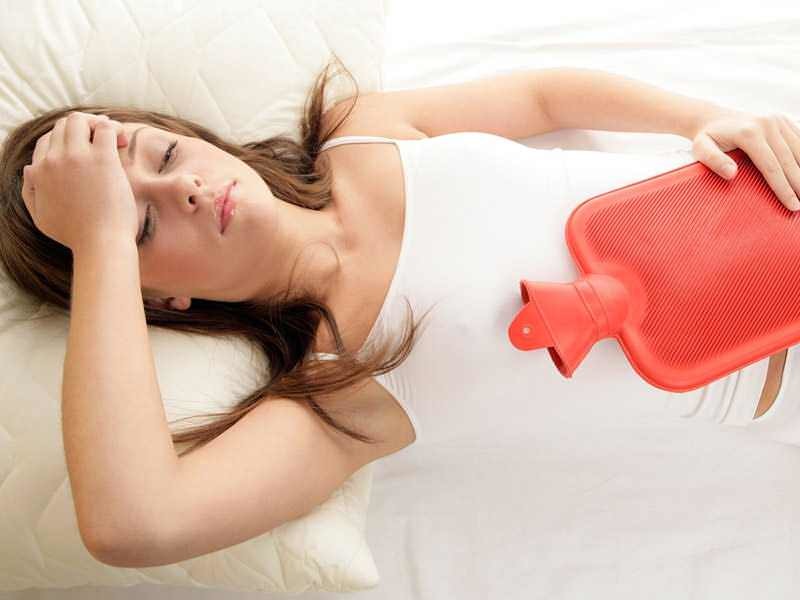Ureaplasma in men: symptoms and treatment of the disease

ureaplasmosis disease implies the presence of inflammation in the genitourinary system. Confirmation of diagnosis is the detection U.urealyticum assays in the absence of other microorganisms that provoke inflammation. The bacterium belongs to the pathogenic microflora and shows no activity in a healthy person.
Ureaplasma is sexually transmitted and is widespread among people. The disease is symptomatic, with men affected more than women. Extremely dangerous form of chronic infection, provoking various complications.
Description ureaplasmas as the causative agent
According to the structure and physiology of the pathogen it occupies an intermediate position between viruses single-celled organisms.
Instead of a three-layer cell wall cytoplasmic membrane, which brings ureaplasma viruses. At the same time, the presence of such a formation nucleus and ribosomes indicates single-celled life forms.
The similarity of bacteria formed by the similarity microcapsules, which forms the outer boundary of the body.
Ureaplasma relates to membrane parasites. His vital functions destroys cells urinary tract mucous membranes. The enzymatic activity of the pathogen directed cleavage IgA immunoglobulins groups that perform safety functions in the body.
In men, the ureaplasma is localized on the mucosa of the penis and urethra. Perhaps its penetration into the prostate gland and seminal channels in the testicles. The bacterium has a negative effect on sperm cells, inhibiting their ability to move actively.
The danger of increasing the number of ureaplasma is that it has an effect on the entire flora of the body. In the diagnosis of the disease is often detected other infections: Mycoplasma, Chlamydia, in rare cases, gonorrhea. The coexistence of pathogens enhances symptoms and complicates treatment.
Causes of ureaplasmosis
Infection with the pathogen possible in several ways:
- Unprotected sex. It is important to note that a person who is an asymptomatic carrier ureaplasma, unaware of the harm caused by the partner. No signs of the disease can last as long as the immune system is functioning properly.
- Vertical route of infection from mother to child. Infection is possible during childbirth during the passage of the fetus through the mucosa of the genital tract of women.
- Contact-household transmission method is considered unlikely.
The increase ureaplasmas activity cause a variety of factors. First of all, they are associated with an imbalance of microflora men, recovery is impossible without medical intervention. On the spread of infection is influenced by:
- Regular stress and nervous tension, reduce human immunity;
- subcooling and viral diseases;
- improper diet;
- promiscuity;
- failure to comply with rules of personal hygiene;
- abuse of alcohol and nicotine;
- frequent use of antibiotics;
- chronic illness with periodic exacerbations.
Under the influence of these factors significantly increase the probability of inflammation. The manifestation of any form of discomfort during urination is cause for seeking medical attention. Early treatment will prevent various complications in the development of the disease.
Through unprotected sexual intercourse possible contamination with pathogens
Symptoms of inflammation in ureaplasmosis
The duration of the incubation period after infection by a pathogen can be up to five weeks. No symptoms at this time due to the small number of bacteria in the affected area. By weakening the protective functions of the organism multiplies ureaplasma intensive, which leads to the appearance of the first symptoms.
In men, symptoms are noticeable discomfort expressed that accelerates recourse to a medical facility. Ureaplasmosis Symptoms include:
- pain and burning sensation during urination;
- meager discharge from the urethra;
- discomfort in the groin area;
- increase in body temperature.
Quite often, the symptoms go away without treatment, but some time back again. If you do not start taking medication, the disease enters a chronic form, and the infection spreads to other organs. Ureaplasmosis provokes the following complications:
- urethritis manifested rezyami, pain and burning during urination;
- prostatitis, leading to disruption of erection until impotence;
- epididymitis - inflammation of the epididymis;
- urolithiasis disease;
- pyelonephritis - bacterial and inflammatory kidney disease;
- infertility;
- sexual dysfunction, leading to a lack of erection and pain during intercourse.
In men, symptoms are painful urination, prostatitis, sexual disorders
Can diagnose the disease using laboratory tests. Type of analysis prescribed by a doctor after the examination of the patient. There are several ways to identify ureaplasmas men:
- Sowing on the microorganism bacteria. Material is scraping the mucous membrane of the genitals. The study established the sensitivity of the pathogen to medicines. Two days before delivery of the analysis it is necessary to give up sexual relations.
- Polymerase chain reaction and enzyme-linked immunosorbent study of blood infection is diagnosed by the presence of antibodies to a ureaplasma.
- Semen analysis to evaluate the level of activity of germ cells.
Stages treatment ureaplasmosis
Taking medicines and re-commissioning tests is required for both partners who are in sexual relationships. The doctor prescribes a course of antibiotics for two weeks. Additionally recommended:
- immunovosstanavlivayuschaya therapy;
- topical treatment - administration of drugs into the urethra;
- undertake a course of physiological processes;
- when complications designate prostate massage.
Over the course of therapy is necessary to refuse sex, diet. After the expiration of antibiotics assigned control study for availability ureaplasma. The latest analysis shall within 3 months after recovery.
antibacterials
Drug treatment is selected in view of the sensitivity of the pathogen to different components of the medication. Ureaplasmas oppressed under the influence:
- macrolides, which include erythromycin, oleandomycin, clarithromycin;
- tetracycline antibiotics - tetracycline and doxycycline;
- antiprotozoal and antifungal agents.
Tetracyclines appointed if ureaplasmosis asymptomatic or has a simple character. In this case the disease is restricted to urethritis and slight discomfort in the groin area. The dosage of doxycycline 100 mg twice per day. Tetracycline consumed 500 mg four times a day.
macrolides
Erythromycin is widely used in the treatment of ureaplasmosis. Characterized by high potency and efficacy, but tolerated by the human body difficult. Appointed by 500 mg in the morning and evening for 10 days. Clarithromycin is used at the complex course of the disease and is administered intravenously at 500 mg per day.
immunomodulators
Timalin, lysozyme or methyluracil used to restore immune function. Eleutherococcus also a good immunomodulator. After closure prescribed course of antibiotics and vitamins C, laktobakterin, drugs that restore liver function.
invalid food
The products used for food should contain plenty of vitamins. Spicy, fatty, smoked, salty foods and alcohol should be excluded.
It is important to note that a course of antibiotics to make sure strictly designated time interval. If treatment is not completed, then the re-infection of these drugs are not effective. That is why self-therapy for the disease is unacceptable.
Ureaplasmosis is especially dangerous for men with reduced immunity. In such situations it is necessary to exclude the impact of factors that increase the risk of infection. These include casual sex, various diseases and unhealthy lifestyles.
A source: https://proinfekcii.ru/parazity/bakterii/ureaplazma-lechenie-u-muzhchin.html
Ureaplasma men - Symptoms and Treatment
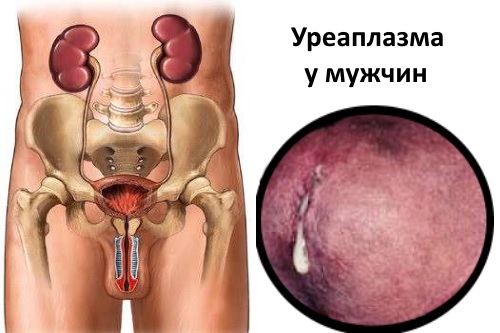
Ureaplasma - bacteria infecting the mucous membranes of the urogenital tract, they occur with equal frequency in men and women. These bacteria may trigger the development of many inflammatory diseases of the genitourinary system, number of cases, the disease becomes chronic, and get rid of it becomes extremely difficult.
Two varieties ureaplasmas that commonly cause disease: ureaplasma urealitikum and ureaplasma parvum. Despite the differences, both types of treatment are usually the same. All species of bacteria that can trigger the development of the disease, usually combined under the name of ureaplasma spetsies.
It should be noted that these microorganisms are considered as opportunistic: they may normally be present on mucous membranes in healthy people, in some cases, they become dangerous and cause disease symptoms. Usually bacteria, which is present on the genitals in most people in a normal state without causing the development of the disease, often called ureaplazmoy spp.
It should be noted that the disease can occur without any pronounced signs and symptoms, the reason for treatment to the doctor most often the complications of infection - inflammatory diseases of the genitourinary system. Only in the process of diagnosis is established the exact cause of the development of pathologies.
Causes of
It should be noted that normally the bacteria may be present in the mucosa of the genitals, even in completely healthy person. In men, they reveal a little less than that of the female. Women are thus considered to be the main distributor of infection.
How is the ureaplasma? The main route of transmission of the infection - sexually household by infection is also possible, but in a much smaller percentage of cases. Typically, the infection is transmitted through unprotected sexual contact. In young children, there is also another way of infection - in utero or during passage through the birth canal mother, sick ureaplazmozom.
Can a man infected with ureaplasma from a woman?
whether the ureaplasma is transmitted from a woman to a man? To the stronger sex it can be called a major source of infection, women are more likely to transmit the infection to your partner than men. While fully protecting against infection is difficult because you need to completely avoid contact of mucous membranes during sexual intercourse.
Can a man to infect a woman ureaplasma?
Cases of transmission from male to female diseases are a little bit less, but this possibility is also present. Therefore, if a man is being treated for an infectious disease, he should abstain from sexual intercourse with his partner.
How does ureaplasma men
Symptoms and other signs of infection appear not immediately after infection, the incubation period in males can be up to several months. For this reason, often determine the exact source of the contamination and time can be difficult.
Typically, the infection does not manifest itself, especially in men. Usually, people go to the doctor when they begin to develop symptoms of diseases of the genitourinary system, the occurrence of which affects ureaplasma. Their first symptoms usually are pain when urinating, too frequent urination, pain in the lower abdomen, pain during sexual intercourse.
Symptoms may also depend in part on whether there is a concomitant infection with this bacterial sometimes defeat other microorganisms present. For example, may meet ureaplasma and mycoplasma, if additional infections may occur additional symptoms: itching, burning, and the occurrence of plaque lesions on the mucous membrane.
See also:Obesity grade 2 men: complications and treatment
Is it necessary to treat?
Ureaplasma species, sexually transmitted diseases and provoke development of various complications, be sure to It should be treated, but it should be noted that first you need to accurately set the type of infection, and only then apply therapy. For example, Ureaplasma and gardenerella may cause similar clinical manifestations, they can be distinguished only by analyzes.
Do ureaplasma treated? Ureaplasma, which is normally present in the mucosa, should not be treated further, if it does not cause the occurrence of any symptoms. Therefore, when the disease is the main therapy is aimed at relief of symptoms and complications, as a whole with the infection can be completely rid of its manifestations.
Analysis on a ureaplasma in men: how to take
Before the treatment of this disease is extremely important full diagnosis of infection, for its detection and analysis of PCR used for planting in most cases.
The delivery of analyzes is no big deal, usually do urine fence and take scrapings, swab for culture in the walls of the urethra in men.
Both procedures are simple and painless, the main thing - respect the doctor's advice on how to collect urine correctly.
The dangerous
The main consequences of this infection - a variety of inflammatory diseases of the genitourinary system. Often there cystitis - inflammation of the bladder, urethritis - inflammation of the urethra, urolithiasis - kidney stones and urinary tract. In men, the infection also increases the risk of prostatitis - inflammation of the prostate gland.
Treatment of the disease in men
In the treatment of this disease in men used various means. The course of treatment usually lasts up to several weeks, depending on the dynamics of disappearance of symptoms, it may be longer. Normally used to treat the following groups of drugs and other agents against such infections:
- Antibiotics. They form the basis of therapy can eliminate bacterial self defeat. Typically used formulations in tablets, macrolide antibiotics are used, derivatives of tetracycline, fluoroquinolones. The choice of a particular drug is up to the treating physician.
- Drugs that normalize the bowels, they are required to recover after the main antibiotic therapy. Use Linex, its analogues.
- Vitamin complexes that improve the state of immunity. Can be used in almost any vitamin supplements, their choice depends on whether the patient's deficiency.
- Treatment of folk remedies. Folk medicine in this case are generally used to enhance immunity. Some experts advise to take the infusion of rose hips, mint, lime, sage, chamomile throughout the treatment. Also recommend lemongrass and echinacea.
Ointment with antibacterial men are usually not required, most often they are administered to women who ureaplasma provoke breach of microflora. Also commonly advised to follow a diet that excludes fatty, too salty, junk food and foods that cause allergies.
The primary prevention of this disease - abstinence from unprotected intercourse with untested partners, who may be ill or are carriers of a ureaplasma. It is also one of the factors considered to be a high level of immunity, the higher it is, the less likely to be ill.
A source: https://lechim-prosto.ru/ureaplazma-u-muzhchin-simptomy-i-lechenie.html
Ureaplasmosis men: findings and symptomatology
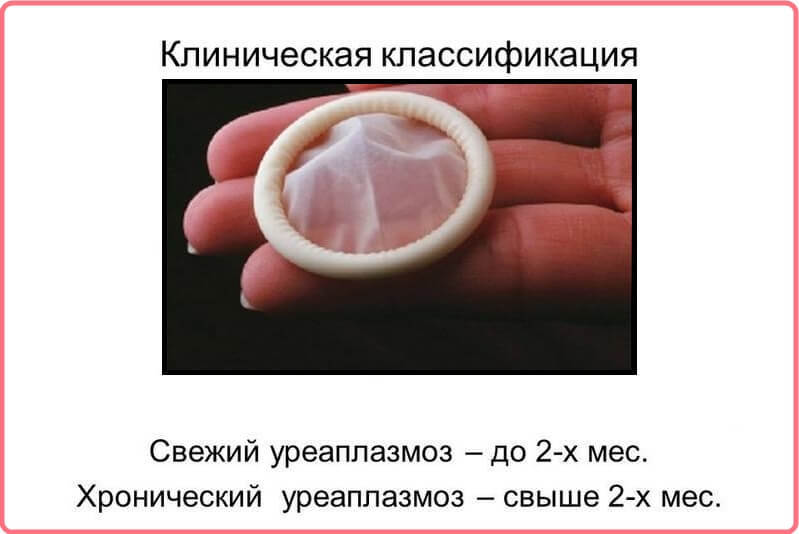
Ureaplasmosis - a disease of an infectious nature, characterized by acute or chronic inflammation of the urinary organs, caused by microorganisms Ureaplasma.
Two subspecies ureaplasmas allocated to date, Ureaplasma parvum and Ureaplasma urealyticum, did not differ in clinical manifestations.
Ureaplasma belongs to a class of bacteria, but has some similarities to viruses. It lacks a cell wall, it is sufficiently small compared to the eukaryotes, the amount of genetic material in it is relatively small. Ureaplasma is an extracellular parasite, unlike viruses that parasitize intracellularly, and also in contrast to the virus is sensitive to antibiotics.
10 reclassification ureaplasmosis disease refers to diseases, sexually transmitted. After this microorganism were attributed to opportunistic microflora, which in small amounts is considered harmless to the organism.
It is necessary to differentiate between opportunistic and saprophytic microbial flora.
Opportunistic bacteria may cause inflammatory disease in the presence of lowered immunity, in case of a large titer with weakened the protective functions of the mucous epithelium. Frequently the presence of opportunistic pathogenic microorganisms is accompanied by some other sexual infection and detected, e.g., chlamydia cured after or together with him.
Saprophytic microorganisms exist on mucous in a symbiotic relationship, do not cause disease and help to strengthen the protective properties of the mucosal epithelium. This group includes all known bifidobacteria.
The incubation period from infection to onset of symptoms can range from a few days to a month. Cases of occurrence of signs of inflammation several years after infection.
Prevalence ureaplasmas quite large. The highest number of infected people is found in the age group of men from 14 to 25 years, that is, the most sexually-active layer that is prone to frequent change of sexual partners.
Bacterium ureaplasma attached to mucosal cells of the urinary tract, and tropic to leukocytes, sperm cells, and respiratory system. First clinical manifestations develop at the site of primary infection, infection in a so-called gate.
Ureaplasmosis in men, primarily manifested urethritis. The patient complains of serous discharge from the urethra, constant urination in men, burning and discomfort when miktsii.
There is evidence that the ureaplasma can provoke symptoms such as premature ejaculation.
Often ureaplasmas can quietly exist in the body, thus not being shown and do not cause the development of symptoms. The bacteria attach themselves to the cells of the mucous membrane of the urinary and genital tract, and in the presence of minimal symptoms imperceptible to the patient formed chronic inflammations in the urethra, bladder, testes, prostate and even the testicles.
Not diagnosed and treated in time ureaplasmosis men may eventually lead to the background of apparent prosperity to chronic prostatitis, cystitis, and even infertility.
Ureaplasmosis women can also take place with a minimum of symptoms, when it is not worried about anything but the mucous secretions.
However, developing a chronic inflammation that leads to chronic cystitis, vaginitis, vaginitis, endometritis, an inflammation of tubes and ovaries, and may also result in the formation of infertility.
Also ureaplasma may be a cause of premature birth, miscarriage.
When non-traditional sexual relations can develop inflammation of the throat and upper respiratory tract - pharyngitis, laryngitis, tracheobronchitis.
In both sexes ureaplasma in an unfavorable course and the presence of immunosuppression may cause inflammation of the kidneys with the development of pyelonephritis, cystitis, with the formation of bladder stones, pneumonia, go to the disseminated form, meningitis, infection arthritis. The cases of these diseases are quite rare, but can not be excluded after infection.
Ureaplasmosis flow at significant number of people living an active sex life (for certain statistics to 80%), it represents a serious threat in terms of epidemiology security.
Ureaplasmosis in men: Causes, Treatment
Cause of urinary organs inflammatory diseases with ureaplasma is a combination of two factors - the presence in the organism a sufficient amount of reducing ureaplasma and protective functions body.
Ureaplasma ingested just from another person. The infection can occur in infancy, in contact with an infected mother during childbirth.
Also, infection can occur through unprotected sexual intercourse, in any form, both man and woman may be unaware they have the infection. In addition, there is data on domestic routes of transmission, for example via the public objects.
Once in the body, the bacterium even in a small amount of starting attached to cells of the genitourinary system and begins to proliferate. When a sufficient amount of useful saprophytic flora of the chemical composition of the internal environment as well as its acidity makes ureaplasma actively proliferate.
In some cases, it established a kind of balance between micro-organisms to the presence of suspended pathogens in a minor amount, with the development of pathological processes not It is happening.
In this case we can speak about the carriage of, that is, there is a possibility to share these microorganisms with the sexual partner.
Ureaplasmosis men whose photos symptoms should not be for you a basis for self diagnosis in the developed clinical picture develops if the body weakened.
The decrease in tolerance to infection is influenced by various factors:
- considerable physical fatigue, high physical load;
- severe stress, emotional overload single, chronic, recurrent, reduced social adaptation;
- other chronic inflammatory and non-inflammatory;
- concomitant urinary tract infection;
- toxic effects on the body of tobacco, alcohol, drugs, etc .;
- dysbiosis.
To identify ureaplasma, in addition to assessing complaints and inspection, conduct additional laboratory tests. The material for the study are blood taken from a vein, or scraping discharge from the urethra.
Laboratory diagnosis has at its disposal the following methods:
- Method of polymerase chain reaction (PCR), which reveals a minor amount of the microorganism in the serum and is often applied at the initial stage of the disease.
- Immunosorbent assay (ELISA), in which the detected specific antibodies to a microorganism.
- The indirect and direct immunofluorescence (RPIF, RNIF).
Typically, laboratory methods give an answer about the presence or absence of a microorganism in the provision of materials for one or two days.
Resulting from the urethra biological material cultured in nutrient media, with for subsequent microscopic identification, and for determining sensitivity to antibiotics.
It takes a much longer time than the laboratory diagnostics. It is necessary more than a week for the growth of colonies of micro-organisms, to monitor their response to antibiotics.
Among the antibacterial agents prefer to antibiotics, which is sensitive ureaplasma.
- First, a group of fluoroquinolones, which include ciprofloxacin, moxifloxacin, Avelox.
- Second, a group of the latest generation of macrolides, examples include azithromycin and clarithromycin.
- Third, a group of tetracyclines - doxycycline JUnidoks.
As a rule, ureaplasmosis men successfully treated these groups of antibiotics, with sufficient patient compliance to treatment. Nevertheless, we can not exclude the presence of partially resistant to the antibiotic microorganisms. To avoid incorrect assignments laboratory conducted seeding biological material is determined and the sensitivity of the microorganism to the antibiotic.
See also:Everyone's favorite dill: useful properties for both men and their potency
Next tested antibiotic appointed course. Some sources contain information about a single application of antibiotics for the purpose of rehabilitation of the body of ureaplasma infection. Such improper or inadequate treatment can be dangerous because ureaplasma temporarily loses its virulence and the symptoms disappear, but full recovery takes place.
In this case, the symptoms may reappear at weakening the body's defenses or other provocations. The disease in the absence of external displays when there is insufficient treatment capacity to develop into a chronic form, with the threat of destruction of eggs and ovarian infertility and formation, as well as in severe disseminated forms, with the development of arthritis, pneumonia, meningitis.
Also uncontrolled antibiotic therapy without determining the sensitivity can lead to the formation of resistant forms of therapy ureaplasma. The question of the appointment of the form of the antibiotic, its dosage, treatment should be decided by a doctor. Also, the doctor performs control after a course of antibiotic treatment, and assigns it a repeat if necessary.
Treat ureaplasma infection must be integrated, this antibiotic therapy is coupled with the use of immunomodulators and adaptogens. By immunostimulant are neovir, tsikloferon, human interferon drugs echinacea. By adaptogenes - metiluratsil estifan. In addition, we recommend taking a multivitamin, with an increased amount of vitamin C.
Appointment of drugs, quantity, dosage deadline defines only the attending physician taking into account all features of the disease and the condition of the body. It is also recommended that the normalization of power and the corresponding lifestyle. At the time of treatment is recommended to be excluded from the food spices, pepper, all sharp, spicy, salty, as well as exotic dishes.
Shows adequate sleep and rest, the normalization of the daily routine in order to restore and strengthen the body's defenses.
Antibiotic treatment has side effects and complications after massive antibiotic dysbacteriosis may develop, fungal diseases, allergic reactions and other manifestations. Modern medical knowledge to treat ureaplasma recommend that if elevated titer of microorganisms if there are inflammatory symptoms and if the birth of a child is planned.
Ureaplasma is treated in men in a complex and together with a partner. If the patient has multiple sexual partners, it is recommended to treat all of them and for a time to reduce this increase sexual desire in men. If, however, the sexual act took place, it must be protected.
After the course of treatment for both partners need to again donate blood on a ureaplasma, and only in the absence of both its treatment is considered effective and can weaken the protection measures. After the treatment is also recommended to adjust the possible existence of dysbacteriosis.
The best prevention ureaplasma, and other infectious diseases of the urinary and reproductive system recognized abstinence. It is recommended to remain faithful to one partner. If this is not possible, then the sexual act in any way to be protected, that is held in the condom.
Despite the current myths of insufficient reliability of condoms, that latex pores are large enough to skip viruses and ureaplasma, a condom is by far the most effective method of protection from sexual infections.
As a method of preventing secondary processing can be used genital chlorhexidine antiseptic and other suitable mucosal.
Compliance with the rules of prevention, timely treatment to the doctor and thorough remedial measures with followed by mandatory supervision will help to maintain health and avoid serious and unpleasant complications ureaplasmosis.
A source: https://impotencija.net/ureaplazmoz/u-muzhchin/
Symptoms and treatment of ureaplasma men
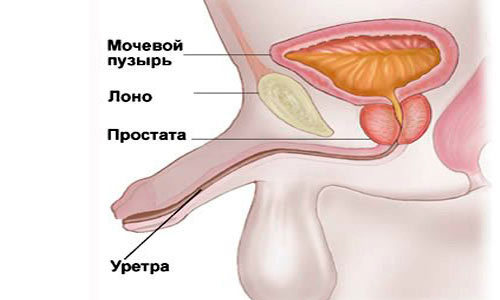
Ureaplasmosis - is an infectious disease caused by a Ureaplasma urealyticum and Ureaplasma parvum (gram-negative bacteria). Ureaplasma urealyticum and parvum - opportunistic intracellular microorganisms.
Being in the human body for a long time, they do not cause disease and any symptomatic manifestations. The disease may acquire chronic course.
Asymptomatic carriage is the cause of a wide dissemination of bacteria.
Since ureaplasma is conditionally pathogenic bacteria and may be present in normal and healthy male body, then the appearance of clinical symptoms, you must have these conditions:
- decrease the body's immunity,
- dysbiosis,
- the presence of acute inflammatory processes in the body,
- infectious diseases.
The cause of ureaplasma men are the following factors:
- unprotected sexual intercourse;
- multiple sexual contacts with different sexual partners;
- uncontrolled intake of antibiotic drugs;
- hormone therapy.
The incubation period and the initial manifestations of the disease
The incubation period ureaplasmas men is 4 days after infection up to 4-5 weeks, When the first symptomatic manifestation of the disease.
Depending on the resistance of the organism, the incubation period may be either reduced or extended up to 7-10 weeks.
In this hidden phase of a man can infect a sexual partner, unaware of the presence of the infectious agent in his body.
The clinical picture and complications ureaplasmas
Because of the long incubation period of ureaplasma in men are asymptomatic for a long time.
The first clinical manifestations of disease can also be erased: the patient complains of the appearance of turbid mucus secretions the nature of the urethra discomfort when urinating act - burning, itching, pain (clinic sluggish urethritis).
During the undulating - symptoms can appear or disappear without treatment. If late or incorrect therapy (self) hroniziruetsya disease. Next ureaplasma symptoms in men becoming more pronounced:
- difficulty of urination;
- sharp pain and burning sensation in the urethra;
- oliguria;
- discomfort in the bladder (feeling of pressure);
- fever and local hyperemia.
Besides chronic process, to the extent of the disease appear complications, the most common of these are:
- Urethritis: manifested by transparent mucous secretions (preferably in the morning); paroxysmal sharp stabbing pain, burning sensation in the urethra area; pain in the prostate area and groin; common symptoms of inflammation - weakness, chills, headache, decreased disability, low-grade fever. Over time, the process hroniziruetsya without proper treatment, relapses occur each time longer and harder.
- Epidimit (inflammation of the epididymis) accompanied by pain in the testicles area; there may be an increase and consolidation in the epididymis. This complication has a negative effect on semen: sperm motility reduction (due to the introduction of the pathogen in the cervix and the sperm cell membrane); violation sperm viscosity (under ureaplazmaticheskih enzymes); the death of sperm.
- Prostatitis (inflammation of the prostate): The patient complains of prolonged nagging ache in the lower abdomen radiating to the buttock muscle, scrotum, penis; sharp intense pain during erection, ejaculation; violation of the act of urinating - painful spasms, oliguria; erectile dysfunction.
diagnosis ureaplasmosis
Diagnosis ureaplasmosis is quite difficult process, as ureaplasma may be part of the normal microflora mocheprovodyaschih and genital tract of healthy humans and becomes pathogenic properties only in certain conditions.
Ureaplasmosis can act as a primary (when the patient except when viewed ureaplasmas other sexually transmitted pathogens diseases have been identified) and secondary (when combined with a ureaplasma gonorrhea, trichomonas infections, chlamydia, herpes, mycoplasmosis).
To identify Ureaplasma parvum urealitika and men necessary to conduct a comprehensive diagnosis for which methods are used in different fields:
- Microscopic methods (reaction of direct and indirect immunofluorescence) reveals a ureaplasma in the event that its content in biological material is much higher than the normal range.
- Molecular biological method - the most modern and effective method for the diagnosis of this disease. polymerase chain reaction method allows you to quickly and accurately determine the presence of ureaplasma or her genetic the material in the study of the biological contents, even if the pathogen is present in a minor quantities.
Culture inoculation (bacteriological method) analysis on a ureaplasma in men taking a swab from the mucous membrane of the urethra (urethral), morning urine portions, prostate secretions gland.
In a study conducted crop produced biological material on special culture media.
The culture method is used to determine the: amount of agent in the body (main diagnostic indicator); the sensitivity of detection of the pathogen to certain types of antibiotics.
- Immunofluorescence analysis reveals ureaplasmas antigenic structure.
Treatment of Ureaplasma parvum in men
Scheme ureaplasma treatment in men depends on whether it is a strain of the pathogen detected in the diagnostic process.
Note that Ureaplasma parvum kind is more pathogenic than Ureaplasma urealyticum and causes more complex effects.
Treatment of Ureaplasma parvum in men is the use of antibiotic drugs tetracycline. Also, the appointment of therapy must take into account the individual characteristics of the patient:
- An allergic patient response to drug administration;
- Antigenic detection sensitivity of strain designated ureaplasma to the preparation;
- The presence of severe pathological conditions in a patient;
- The presence of concomitant chronic and acute diseases.
Therapy medication therapy lasts for 2-3 weeks. The treatment requires strict control of peripheral blood (number of antibiotics can cause thrombocytopenia, leukopenia).
Due to the fact that the selected therapy increases the risk of bleeding, you should not start treatment ureaplasmosis in the preoperative period. The drug of choice in the treatment of Ureaplasma parvum in men is "Doxycycline" ( "Soljutab", "JUnidoks") received 100 mg, 2 times / day.
The course of treatment - 7-10 days, after which you need to hold a new laboratory study to assess the effectiveness of the selected treatment regimen. With the ineffectiveness of antibiotic drugs need to change therapy.
Also, if you are allergic to tetracycline antibiotics, the drug can be used macrolide ( "Erythromycin", "spiramycin"). Besides antibiotic administered also bracing and immunomodulating therapy (particularly when late diagnosis of the disease and chronic process), vitamin therapy, probiotics.
Mandatory element of successful treatment is strict adherence to a diet: the diet should be present in a significant amount of milk and lactic acid products (to restore normal intestinal microflora after the negative impact of antibiotics on it) should be excluded sharp, salty, fried and smoked food. During treatment ureaplasma parvum is recommended:
- Exclude sex for the duration of the therapy;
- Prevent hypothermia;
- Adhere to proper diet;
- Do not go to public baths, swimming pools, saunas.
See also:Especially the appearance of herpes on the lips of men
Regimen ureaplasma urealitikum
Selection scheme drugs to treat ureaplasma urealitikum men based on the same principles as in the treatment of Ureaplasma parvum: elimination of possible allergic reactions to prescribed medication, absence of severe conditions and comorbidity, revealing the degree of sensitivity selected to identify the antibiotic pathogen. The main drugs are antitiotiki tetracycline, macrolides and fluoroquinolones:
- "Azithromycin": take 1 tablet 2 times / day (0.5 gram), the reception rate of - 7-14 days;
- "Erythromycin": take 1 tablet 4 times / day, admission rate - 7 days;
- "Doxycycline": take 1 tablet 2 times / day, admission rate - 7 days;
- "Levofloxacin": take 1 tablet 2 times / day, the reception rate - 7 days.
Also apply immunomodulators "Timalin", "Lysozyme", "Metiluratsil"; vitamin comprises receiving B vitamins and vitamin C. At the end of antibiotic therapy for patients administered probiotics and hepatoprotectors, in order to restore normal microflora.
Diet to be followed during treatment, should help normalize the balance of microflora. At the end of therapy is also appointed by the laboratory tests that confirm mud refute the effectiveness of treatment.
If necessary to replace ineffective treatment drugs group.
Prevention ureaplasmas
Knowing how to manifest ureaplasma men, many are thinking about self-treatment. However, the detection of at discomforts and any clinical symptoms should not resort to self - the question of how to treat ureaplasma men should be addressed physician urology or dermatovenereological Profile.
To prevent infection with ureaplasma should follow these rules:
- Vesti's adjusted sex life;
- To engage in protected sex, to use condoms;
- Undergo regular medical examinations;
- Observe good personal hygiene;
- Not supercool;
- Comply with the principles of good nutrition.
Subject to these rules, ureoplazmoz not be a problem for men.
A source: https://brulant.ru/health/ureaplazma-u-muzhchin/
How does ureaplasma men - All parasites of man: danger, symptoms and forms
 Ureaplasma - is a group of bacteria that are parasites inside the cells of the mucous membranes of the urogenital system in men and women. Refer to conditionally pathogenic microorganisms. Ureaplasmosis men develop quite often.
Ureaplasma - is a group of bacteria that are parasites inside the cells of the mucous membranes of the urogenital system in men and women. Refer to conditionally pathogenic microorganisms. Ureaplasmosis men develop quite often.
Microorganisms living in the majority of healthy people without causing pathologies. With a weakened immunity ureaplasmas begin to actively proliferate, there are inflammatory processes.
If symptoms ureaplasmas recorded in men, its causes are directly related to the patient's personal life (sex with an infected woman).
Why develop ureaplasmosis
Ureaplasmosis in men is caused by bacteria species: Ureaplasma parvum and urealitikum. These parasites are first attributed to the bacteria of the genus Mycoplasma, but later identified as a separate unit.
The symptoms and treatment of this disease is firmly linked, since the use of medications aimed primarily at reducing and neutralizing it manifestations of this disease. Ureaplasmas have no cell wall, can cleave urea. The causes of the disease are varied.
The main route of infection - unprotected sex. options for transmission of parasites are also considered from person to person through blood, saliva.
Bacteria can occur in epithelial cells of the integument of the urinary tract, the prostate gland without causing disease. Activation and excessive reproduction ureaplasmas contributing factors:
- Chronic diseases (HIV, tuberculosis, diabetes).
- Hormonal disruptions.
- Hypothermia.
- Frequent stress and tension.
These factors reduce the activity of the immune system. He becomes unable to control the size of the population of microorganisms.
Initially ureaplasma appears in the shell of the urethra. Breeding, they fall into the prostate, the seminal vesicles.
Manifestations ureaplasmosis men
Ureaplasma in men can occur for a long time in a latent form. Bacteria actively proliferate, develop new habitats. The infected man, without knowing it, transmits the parasite to her sex partner or partners.
With the weakening of immunity, increasing the population of parasites, there are signs of inflammation in the tissues and organs of the urogenital system. The main symptoms of ureaplasma in men:
- Palpitations, poor urination.
- Burning sensation, pain when urinating.
- Pain in the abdomen or in the groin area.
- Discharge from the penis.
- Fever.
- General weakness, fatigue.
Sometimes a man may appear poisoning symptoms - nausea, vomiting, diarrhea. Manifestations show deep bacterial lesions of the urogenital tract, the symptoms Ureaplasma parvum men do not go unnoticed. ureaplasmosis often combined with other infections transmitted sexually - chlamydia, mycoplasmosis, trichomoniasis, gonococcal infection.
complications of the disease
Ureaplasmosis in men occurs in the chronic form. In such complications may occur during the development of infection:
- Urethritis (inflammation of the urethra), occurs most often.
- The narrowing of the urethra.
- Pyelonephritis (inflammation of the renal pelvis).
- Prostatitis (inflammation of the prostate).
- Orchitis (testicular inflammation).
- Balanitis (inflammation of the glans penis).
- Very rarely epididymitis (inflammation of the epididymis of the testis).
Orchitis, if not promptly seeking treatment can cause the development of infertility.
How to diagnose
For diagnosis ureaplasmosis need to get tested:
- scraping of the urethra (assayed by PCR);
- blood (analyzed by ELISA and by using the indirect immunofluorescence);
- crop on antibiotic resistance;
- semen.
The method of PCR (polymerase chain reaction) in the deciphering of foreign DNA in a biological sample. PCR to determine the presence of a smear and in the form of the parasite. This is the most reliable method of research. The only drawback of PCR - it is impossible to estimate the population size Ureaplasma parvum in men.
Blood often examined by ELISA. Enzyme immunoassay was carried out to identify specific antibodies and antigens in a biological fluid. Using ELISA can accurately determine the type, the number of population of the pathogen, the disease stage.
indirect immunofluorescence reaction to determine the antigen-antibody complexes in the blood sample. Material was treated with specific antibodies against the serum with a luminous substance. The sample is then examined under a fluorescent microscope. The method allows to determine the type, the number of bacterial populations.
RNIF and ELISA are highly sensitive methods. They allow you to define the antigens, even in low concentrations. Blood was also tested by PCR.
What the doctor treats the disease in men
How and what doctors treat ureaplasma in men? With the frequent urge, pain and burning sensation when urinating, need to go to the urologist. The doctor will make history, prescribe the necessary tests, explain the rules of delivery of material for study.
When the results are received, the urologist announce reasons of which were ureaplasma. If tests show that ureaplasmosis combined with other infections, sexually transmitted disease, you need to get advice venereologist.
Often ureaplasma in men treated concomitantly with other diseases, the symptoms determine the treatment.
treatment regimen
How to treat a ureaplasma in women and men? ureaplasmas treatment for men includes two stages. The first stage - the fight against bacteria. The second step - the restoration of the normal state of the organism. ureaplasmosis treatment in men is carried out using the following groups of products:
- Antibiotics. Basically prescribed tetracyclines. If the analysis showed that the microorganisms are resistant to the action of this group of antibiotics, macrolides used. If ureaplasma infection is combined with other infections, prescribed fluoroquinolones.
- Probiotics. Treatment with antibiotics leads to disruption of the intestinal microflora, to avoid this, appointed probiotics.
- Antihistamines. Antibiotics, and toxins that set dead bacteria, can cause severe allergic reactions. Antihistamines block the receptors of the main mediators of allergy - histamine.
- Vitamin complexes. Help adjust work regulatory system of the body, to normalize metabolism.
- Immunomodulators. Improve immunity.
Driving and duration of treatment ureaplasmas men depends on the severity of the disease and individual patient characteristics. The patient at the time of treatment should be discarded from sex, smoking, fatty and spicy foods. If ureaplasmosis led to the development of prostatitis, the recovery period prescribed male prostate massage.
Monitoring the effectiveness of treatment by using Ureaplasma clinical assays. After finishing the course of antibiotics the patient is losing blood for research and scraping of the urethra. If the antigens were not detected in the samples, it can be argued that the treatment was successful.
sexual partners need to be treated if the patient
Ureaplasmosis - is an infection that is sexually transmitted. Effective treatment will be only when it will be all the patient's sexual partners. They also consult a urologist, scraping and hand over a blood from a vein for analysis.
Ureaplasmosis women treated in the same way as men. Also prescribed antibiotics, Probiotics, antihistamines, and vitamins. A woman should go for further examination by a gynecologist to avoid complications that may affect reproductive function.
Relapse and re-infection
Ureaplasmosis in men usually occurs in chronic form with periodic relapses. When the manifestation of symptoms ureaplasmosis need to undergo re-diagnosis and treatment. Ureaplasmosis start to treat yourself, based on previous experience is impossible.
Bacteria can adapt and become resistant to the antibiotics that have been used before. What to do then? Conducted a second test on the parasite resistance to drugs. Depending on the results, the doctor prescribes treatment ureaplasmosis men.
Dosages may also vary.
Re-infection can occur men, if his sexual partners were not informed and did not pass the course of therapy. Also re-infection threatens all patients who are promiscuous, often change partners, neglect contraception.
Prevention ureaplasmosis men
Prevention ureaplasmosis help avoid relapses, re-infection after treatment. Prevention measures are very simple: protected sex acts.
- Avoidance of casual sex.
- Regular medical check-ups.
- Taking vitamins.
- Proper nutrition. Reducing the amount of fatty, fried, spicy food, sweet.
Diseases of the genitourinary system, proceed very painful, dangerous complications. Adequate man, ever been ill, be sure to revise their behavior (if it was the cause of infection) and will take all necessary steps to again be treated.
Ureaplasma develops in men in the epithelial cells of the urethra, prostate, can reach the kidneys, seminal tubules. The infection is asymptomatic.
Manifestations indicate the onset of inflammatory processes, which can lead to the loss of men's health. Ureaplasma men dangerous, treatment should be timely and comprehensive.
You can not interrupt the course of therapy prescribed by a doctor at the first improvement.
A source: https://IvsParazit.ru/prochie/ureaplazmoz-u-muzhchin.html

